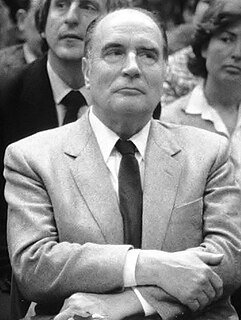
François Maurice Adrien Marie Mitterrand was a French statesman who served as President of France from 1981 to 1995, the longest time in office in French history. As First Secretary of the Socialist Party, he was the first left-wing politician to be elected President of France under the Fifth Republic.

François-René, vicomte de Chateaubriand, was a French writer, politician, diplomat and historian who founded Romanticism in French literature. Descended from an old aristocratic family from Brittany, Chateaubriand was a royalist by political disposition. In an age when a number of intellectuals turned against the Church, he authored the Génie du christianisme in defense of the Catholic faith. His works include the autobiography Mémoires d'Outre-Tombe, published posthumously in 1849–1850.

Jules François Simon was a French statesman and philosopher, and one of the leaders of the Moderate Republicans in the Third French Republic.
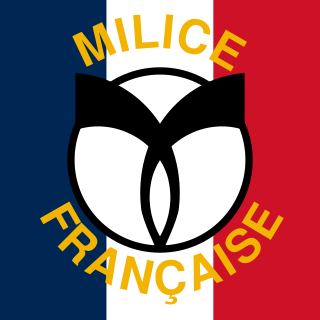
The Milice française, generally called the Milice, was a political paramilitary organization created on 30 January 1943 by the Vichy regime to help fight against the French Resistance during World War II. The Milice's formal head was Prime Minister Pierre Laval, although its Chief of operations and de facto leader was Secretary General Joseph Darnand. It participated in summary executions and assassinations, helping to round up Jews and résistants in France for deportation. It was the successor to Joseph Darnand's Service d'ordre légionnaire (SOL) militia. The Milice was the Vichy regime's most extreme manifestation of fascism. Ultimately, Darnand envisaged the Milice as a fascist single party political movement for the French state.

Jacques René Hébert was a French journalist, and the founder and editor of the extreme radical newspaper Le Père Duchesne during the French Revolution. He was a leader of the French Revolution and had thousands of followers as the Hébertists ; he himself is sometimes called Père Duchesne, after his newspaper.

René Pleven was a notable French politician of the Fourth Republic. A member of the Free French, he helped found the Democratic and Socialist Union of the Resistance (UDSR), a political party that was meant to be a successor to the wartime Resistance movement. He served as prime minister two times in the early 1950s, where his most notable contribution was the introduction of the Pleven Plan, which called for a European Defence Community between France, Italy, West Germany, and the Benelux countries.

Fontenay-aux-Roses is a commune in the southwestern suburbs of Paris, France. It is located 8.6 km (5.3 mi) from the center of Paris.

A Research and Intervention Brigade, commonly abbreviated BRI, often called "Anti-Gang Brigade", is a unit of the French National Police.
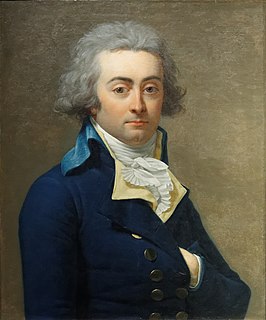
Marie-Jean Hérault de Séchelles was a French judge and politician who took part in the French Revolution.
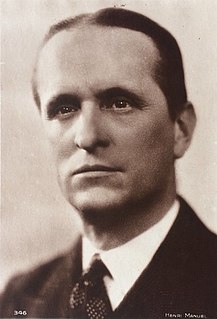
François de La Rocque was the leader of the French right-wing league named the Croix de Feu from 1930 to 1936 before he formed the more moderate nationalist Parti Social Français (1936–1940), which can be seen as a precursor of Gaullism.
The far-right leagues were several French far-right movements opposed to parliamentarism, which mainly dedicated themselves to military parades, street brawls, demonstrations and riots. The term ligue was often used in the 1930s to distinguish these political movements from parliamentary parties. After having appeared first at the end of the 19th century, during the Dreyfus affair, they became common in the 1920s and 1930s, and famously participated in the 6 February 1934 crisis and riots which overthrew the second Cartel des gauches, i.e. the center-left coalition government led by Édouard Daladier.
Roger Borniche was a French detective of the Sûreté nationale and author. He started as a singer, but his fledgling musical career was interrupted by the German invasion of 1940. To make a living, he took a job as a store detective. In 1943, he joined the Sûreté nationale as Inspector to avoid being shipped to a forced labour detail. Assigned to hunt the Resistance, he instead helped partisans escape from occupied France. He deserted in 1944, only days before the D-Day invasion.
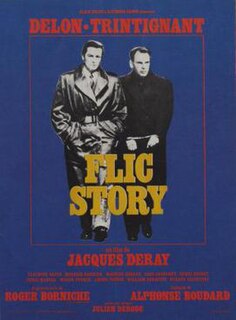
Flic Story French: Il était une fois un flic is a French crime thriller released on October 1, 1975, based on the autobiography of the same name written by French police detective Roger Borniche. Both film and book portray Borniche's nine-year pursuit of French gangster and murderer Emile Buisson, who was executed on February 28, 1956. Directed by Jacques Deray, the film stars Alain Delon and Jean-Louis Trintignant as Borniche and Buisson respectively, supported by Claudine Auger and André Pousse.
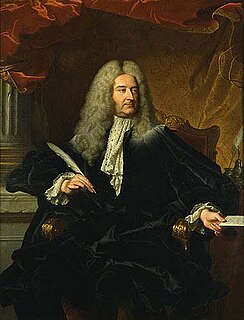
Germain Louis Chauvelin, marquis de Grosbois, was a French politician, serving as garde des sceaux and Secretary of State for Foreign Affairs under Louis XV.

Primarily, organized crime in France is based in its urban, major cities such as Marseille, Grenoble, Paris, and Lyon. Organized criminals are collectively known as the French Mob and singularly known as les beaux voyous operating within Le Milieu.

The Citroën Traction Avant was a range of mostly 4-door saloons and executive cars, with four or six-cylinder engines, produced by the French manufacturer Citroën from 1934 to 1957. Approximately 760,000 units were produced.

Be Beautiful But Shut Up is a French black-and-white crime comedy film made in 1958, directed by Marc Allégret.



















